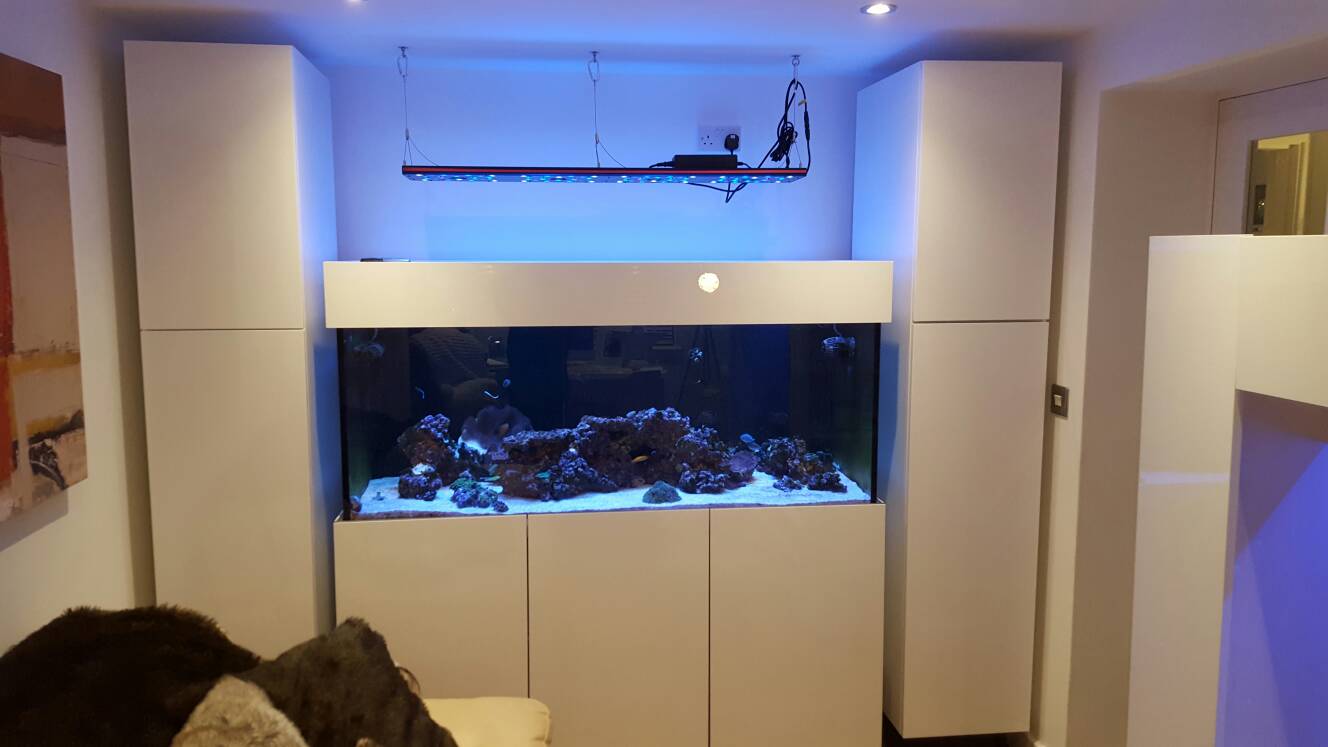karimwassef
Active member
This is such a loaded question. First, a PAR meter does not measure all of the output of some types of light. Most are from 420 to about 660 NM - almost what human eyes can see, but not quite. T5, VHO and Metal Halide will produce significant output on both sides of this that t to the coral growth. Some LEDs will get slightly below 420 and above 660 - there is output lost here too. Second, the type of light matters. 800+ PAR of Metal Halide and the coral will thrive. 800+ of most LEDs and they will burn and die. It is not a quantity of light thing - it is a quality of light thing. Third, PAR meters are not precision instruments - they are OK, but if you really want to know output then you need to spend a mint on an integrated sphere. People can switch sensors and get wildly different output. They need to be used as one of many tools to get to the right place.
About all a PAR meter is good for is to tell you with your particular light what is happening when you change something in your tank. ...so to see if you should move a coral from one spot to another in your tank - PAR meter is good for this to make sure that you don't raise it too much at once. To compare your results to mine - not so much.
I would rather focus on wattage of the lights. There is no energy savings by using one sort of light or the other. I would use 250W of light over every 2'x2' area for good results. ...so in a four foot standard 120G tank, 2x250W halide, 8x54W T5, 4 150W panels (some use 6), etc. The people who use one panel per 2x2 area are using less light and should compare their results to 150W halide or a 4 bulb T5 setup.
Reflectors matter with SPS. If you are going to cover a large area, then 8 T5s or a MH with a large reflector will eliminate shadows as well as anything. The larger panels like ReefBreeders, AcroOptics, etc, also cover more area than the point-source LEDs like Kessil and Radion. It can take 3x point source lights to avoid the shadowing of a single halide on a reflector.
Lastly, the type of acropora matters. Some will want as much light as you can give them - seriously, you cannot give most milles, stags or tenius enough light (within reason). Some will not - the deepwater stuff like most dragons, echinata, etc. will do much better under less amounts of light.
I don't agree. Watts is power consumed and has nothing to do with the photons generated except that higher PAR sometimes aligns with higher power consumption, but not always... PAR at a single point is meaningless, but a PAR map taken by looking at small increments will show hotspots created by improper LED focusing and predict burning.
One difference between LED and MH isn't quality vs quantity. It's directionality and the need for lenses vs. reflectors. Parallel beams of light (LED) vs. divergent beams of light (MH). They can be focused or redirected based on what is behind or in front of them. With sufficient divisions, and making a proper map, you can use a PAR meter to determine if you have sufficient light and where you have it.


